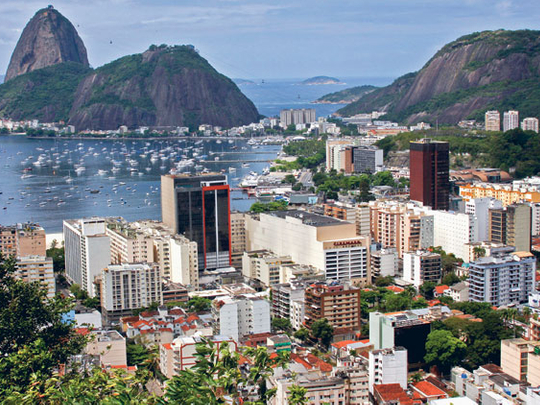
Brasilia: The month-long slump that has made Brazil's real the worst performer in Latin America may deepen as Bank of America and Barclays say investment will slow before the vote to replace President Luiz Inacio Lula da Silva.
The two banks cut their third-quarter forecast for the real by more than 2.5 per cent in the past five weeks, driving down the consensus year-end estimate in a Bloomberg survey by 1.1 per cent to 1.77 per dollar. The reductions contrast with increases in forecasts for the Mexican peso and Argentine peso.
While the real fell 5.4 per cent in the past month as Europe's debt crisis eroded demand for higher-yielding emerging-market assets, further declines will be driven by candidates' campaign comments ahead of the October elections, said Roberto Melzi, a Latin America local markets strategist at Barclays.
"There'll be a bit of noise about what the candidates do, what they don't do, who they appoint," Melzi said in a June 2 telephone interview from New York. "There could be uncertainty, volatility and some weakening" in the real, he said.
Barclays, the third-largest currency trader according to Euromoney Institutional Investor, cut its September forecast last month to 2 reais per dollar from a previous 1.95.
Charlotte, North Carolina-based Bank of America lowered its third-quarter call in late April by 9.5 per cent to 1.9.
Europe woes
The real plunged to 1.8654 from 1.7648 in the past month on speculation credit-rating downgrades in Greece, Spain and Portugal would slow the global economic recovery. The drop is the biggest among the six most-traded Latin American currencies.
The cost to insure against real declines for three months surpassed the one-year premium for the first time in 16 months on May 7, signalling investors are more bearish on the real over the short term than long term.
Three-month options giving investors the right to sell the real cost 5.82 percentage points more than contracts to buy in late New York time. One-year options offering the right to sell cost 5.5 points more than contracts to purchase. The premium gap between the three-month and one-year contracts touched 0.55 point on May 21, the biggest since December 2008.
The ‘global volatility' sparked by the European crisis will ease in coming months, Melzi said. "As this fear dissipates, we would expect the real to underperform other currencies because" of the elections, he said.
Dilma Rousseff, an ex-Marxist guerrilla who served as Lula's cabinet chief for five years, and Jose Serra, a former health minister and Sao Paulo governor, are the leading candidates. Lula is ineligible to run for a third term. The candidates were in a statistical dead heat, according to a May 10-14 poll by Sensus that has a margin of error of 2.2 percentage points. Rousseff was supported by 41.8 per cent of the 2,000 people surveyed while Serra was backed by 40.5 per cent.
"The danger zone for politics to contaminate riskier assets is the August-September period," said Paul Biszko, an emerging-market analyst at RBC Capital Markets in Toronto.
Biszko predicts the real will end the year at 1.85. He says that neither candidate is a ‘positive' for the real because the two favour boosting the size of government and increasing its role in the economy, measures that would run counter to what he says is the country's need to reduce taxes. "We are a bit cautious," he said.
Brazil's budget deficit widened to the equivalent of 3.2 per cent of gross domestic product in the 12 months through April from 3 per cent in the year-earlier period, according to the central bank. The gap is down from a five-year high of 4.6 per cent of GDP in October.
The real slid 2.6 per cent today and is down 6.5 per cent this year. It soared 33 per cent in 2009, the biggest gain among major currencies.
- 5.4% fall in the real's value in May amid Europe crisis
- 3.2% Brazil's deficit, in GDP terms, in year through April












